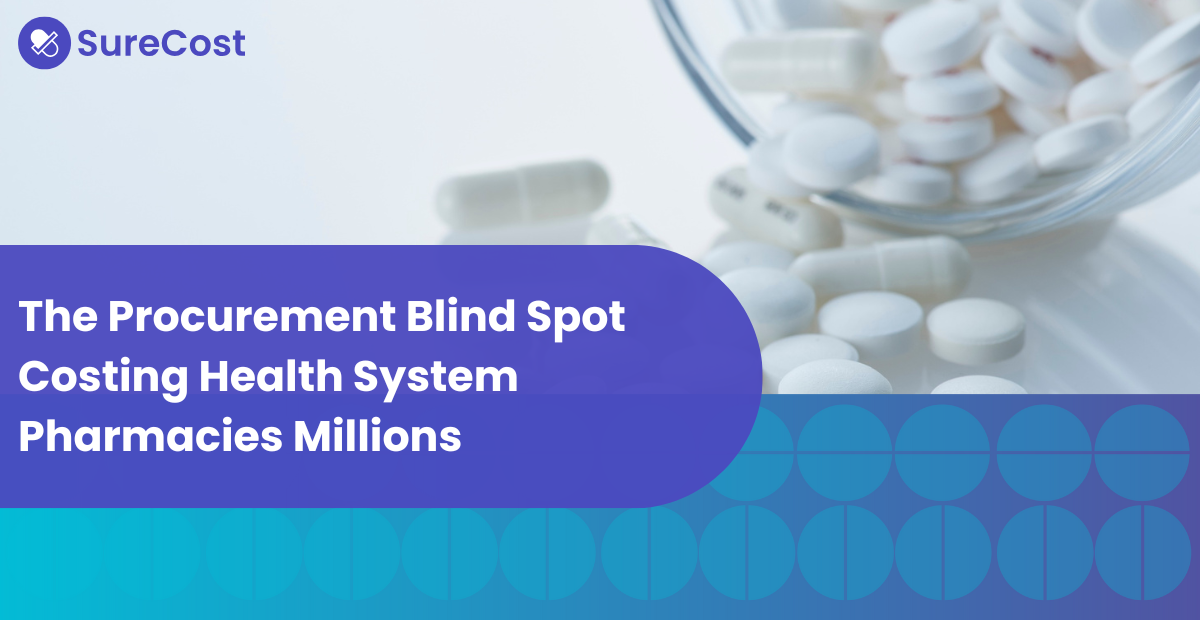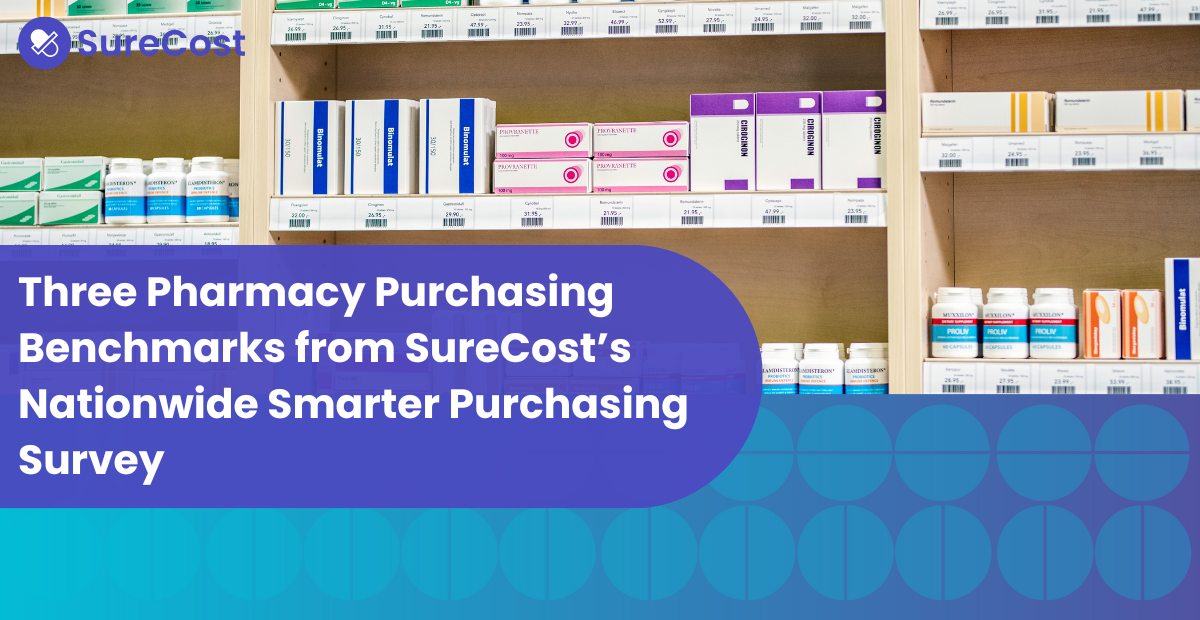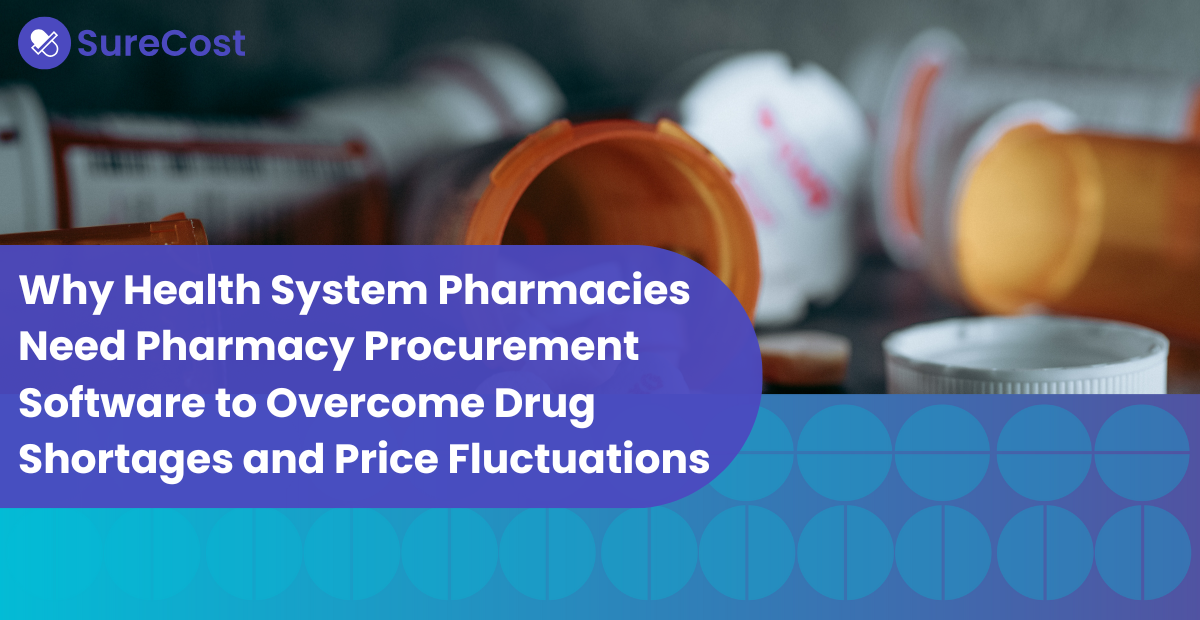When it comes to procurement at your health system pharmacy, is it merely “good enough?” Good enough to maximize savings, efficiency and staff satisfaction? Unfortunately, “good-enough” procurement practices—like outdated approaches, manual processes, bare-bones technology and retrofitted systems—cost health system pharmacies time and money while burning out staff and taking substantial risks.
This blog post will show you the alternative: outlining the benefits of a unified pharmacy procurement solution and why it’s essential to face the growing challenges faced by health system pharmacies.
The Difference for Health System Pharmacies in Today’s Procurement Environment
Pharmacy procurement software isn’t just what you use to purchase products; it enhances how health system pharmacies do it. It maximizes savings, optimizes compliance, and enhances how teams work, starting with the ability to manage all aspects of procurement through a single solution:
- Finding products from all sources
- Comparing options based on multiple factors (price, rebate, impact on compliance, availability, comparables, package, etc.)
- Submitting a single purchase order for all vendors
- Automatically validating correct item, quantity, and price at receiving
- Ensuring primary vendor compliance
- Tracking DSCSA compliance
- Monitoring and replenishing inventory
We include inventory because it reflects purchasing, and purchasing, in turn, impacts inventory. Health systems should leverage technology that manages both these aspects of procurement. Also, note that unified pharmacy procurement software handles DSCSA data at receiving. With the latest round of DSCSA updates, health systems can’t rely on manual tools or a separate process that risks manual error or non-compliant storage. Otherwise, they risk hefty fines, penalties and even sanctions.
Managing all these processes with a single solution provides a comprehensive, accurate and updated overview of all purchasing options from your complete vendor portfolio. You can buy from secondary vendors, tertiaries and directly from manufacturers. You can also compare 340B, WAC and GPO accounts without juggling catalogs, switching views or manually analyzing all those options. Instead, you purchase based on your strategy and goals before uploading a single PO through one interface.
Speaking of data, unified pharmacy procurement software is more than a database. Many health system pharmacies are swimming in data but lack a convenient, robust way to harness it. Piecemeal sources (e.g., siloed reports, homegrown spreadsheets) leave them with a fractured, incomplete procurement picture, and it takes them hours just to get there.
On the other hand, a unified purchasing management platform centralizes all procurement data alongside a variety of configurable reports and dashboards. Teams can analyze purchasing trends, spot savings opportunities (e.g., from higher compliance tiers, by purchasing outside the top 200), forecast inventory gaps (i.e., low supply needing replenishment or overstock that can be transferred or returned) and make data-driven decisions. Again, it’s not just a tool for procurement; it’s a way to enhance how your health system operates.
Macro Trends Driving the Need for Unified Pharmacy Procurement Software
Of course, in the abstract, these advantages sound like common sense. But let’s consider them within the context of today’s challenges for health system pharmacies.
For health system pharmacies, procurement involves a complex, often deliberately opaque network of sources and accounts (i.e., WAC, 340B, GPO). The ability to sift through all the data to quickly and easily find the best purchasing option is critical. Primary vendor compliance alone is so complicated that pharmacies may fail to meet targets when making purchases and then incur penalties. They also miss minimum spend requirements, lose out on additional savings or fail to maximize spend for the best rebate potential. That’s just compliance with your primary vendor.
There’s also compliance by vendors. For example, each year, SureCost’s Smarter Purchasing Report continues to show that pharmacies lose substantial sums of money due to unintentional but costly mistakes by vendors. Take discrepancies between the actual value of goods received and the amounts vendors invoice them. For a pharmacy purchasing approximately $3M annually, just a half-percentage point difference means losing $300K a year. Unexpected vendor substitutions, even infrequently, can have a financially significant impact at scale. One pharmacy saw a six-figure increase in COGS just due to substitutions.
The Inflation Reduction Act (IRA) will, in turn, drastically cut pharmacies’ margins as manufacturers, commercial plans and PBMs adjust prices, coverage and formularies to compensate. Refund delays from drugmakers will lead to additional financial losses for pharmacies.
It’s incumbent on staff to adhere to procurement strategy and continually seek better purchasing options. However, they’re managing more responsibilities for an increasingly complex patient population amid higher inpatient/outpatient volumes driven by chronic care management. That’s on top of staff shortages continuing to affect health system pharmacies due to a shrinking workforce and lower enrollment in pharmacy schools. That all compounds issues around time, tedium and burnout.
The Stakes for Health System Pharmacies
Health systems need every means to gain visibility into procurement trends and unlock additional savings to mitigate these issues. At the same time, they must empower teams with every advantage and reduce their workload to keep them satisfied in their roles. Technology can never replace staff, but streamlining workflows and making the work easier helps them concentrate on “top-of-license” work.
Once again, it’s not simply what you do, but how you do it. Health system pharmacies have a choice to make. They can settle for reacting to problems, wasting hours chasing the right purchasing options and leaving money on the table. Or they can leverage a unified purchasing solution that keeps their pharmacy efficient, informed, and focused on high-value work. With no shortage of challenges facing health systems, are your procurement practices “good enough?”

.png)





